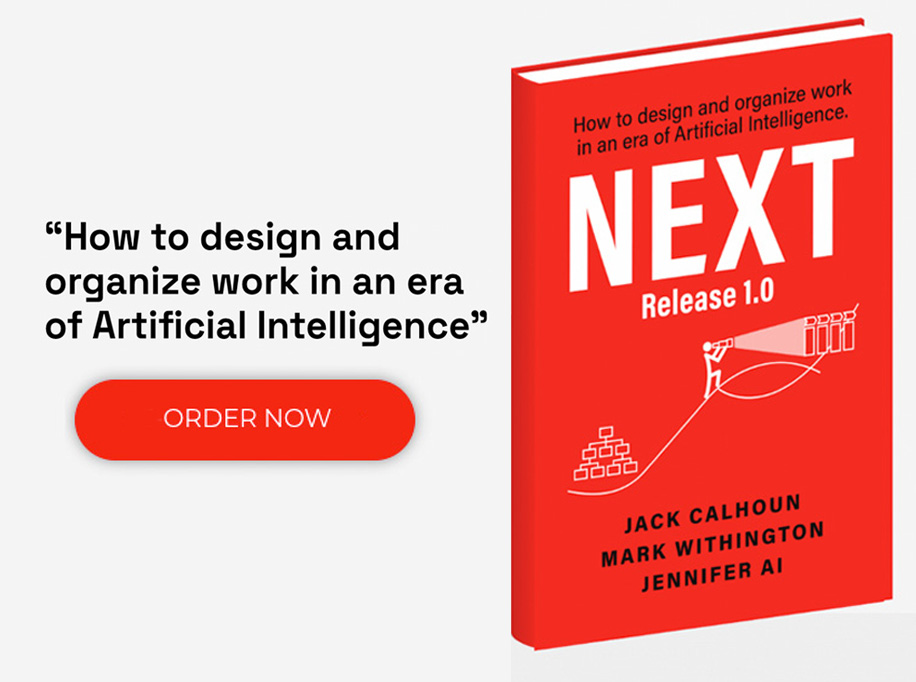Today, organizations face the challenge of simultaneously running current operations, navigating current changes, and facing an uncertain future—all while delivering exceptional customer experiences in a complex digital world. Accelare’s High-Definition Operating Model provides just the framework needed to meet these challenges. Drawing inspiration from Building Information Modeling (BIM) in architecture, our approach creates a digital twin of your organization that aligns strategy, processes, governance, customer experience, and technology. In this guide, we outline the seven steps to design and implement a High-Definition Operating Model that helps your business weather any storm.
What is an Operating Model?
An operating model is the way an organization structures itself to execute its strategy and deliver value to customers, stakeholders, and employees. It defines how a business operates on a day-to-day basis, covering:
- Organizational structure: How teams, departments, and functions are arranged
- Processes: The core activities and workflows that deliver products or services
- Technology: Tools and systems that support business operations
- People: Roles, responsibilities, capabilities, and governance
- Performance metrics: Methods to measure and manage success
Effective operating models create clarity around decision rights, accountability frameworks, and how information flows through the organization. They also change over time as priorities shift or market conditions change.
Types of Operating Models
Traditional Models
There are several types of operating models that organizations commonly use. They include:
- Functional: Organized by specialized departments (Marketing, Finance, Operations, etc.).
- Divisional/Business Unit: Organized around products, geographies, or customer segments, with each division having its own functional capabilities.
- Matrix: Combines functional and divisional structures, with employees reporting to both functional and project/product managers.
- Network: Highly decentralized model where semi-autonomous units collaborate through partnerships.
- Platform: Core infrastructure supports multiple business models simultaneously.
- Shared Services: Centralizes support functions to serve multiple business units, capturing economies of scale.
- Holacratic: Removes traditional hierarchy, distributing authority through self-organizing teams.
Accelare’s High-Definition Operating Model
At Accelare, we take a disruptive approach and advocate for the High-Definition Operating Model. This approach draws inspiration from Building Information Modeling (BIM) used in architecture and construction, providing a multi-dimensional, dynamic digital twin of your organization that transcends traditional org charts and static planning tools.
The Hi-Def Operating Model bridges the vast expanse between strategy and execution. It details the structures, people, processes, capabilities, and technologies needed to turn aspirations into outcomes. Technology is not merely a supporting function but the heart of the value proposition itself.
Unlike traditional models that delegate operationalization to functional departments, the Hi-Def Operating Model requires executive involvement and cross-functional collaboration to create alignment and identify areas for transformation early in the process.
Value Proposition vs. Business Model vs. Operating Model
These three conceptual models: value proposition, business, and operating model are related but distinct concepts that address different aspects of how an organization functions:
Value Proposition (the ‘WHY’ prospect buy from you)
- Customer segments: Who you serve
- Statement of need: What problem of theirs you solve
- Product/service position: How you solve their need
- Competitive position: How you do that better than your competition (beit current or new entrant)
Business Model (the ‘HOW’ you make money/profit with your value proposition)
The business model defines what value an organization creates and captures. It focuses on:
- Revenue streams: How you make money (subscription, one-time sales, freemium, etc.)
- Cost structure: Major cost categories and financial logic
- Key partnerships: External relationships that enable your business
The business model answers fundamental questions like “How do we make money?” It’s the commercial logic of the business.
Operating Model (the ‘WHAT’ you do to deliver your value proposition and business model)
The Operating Model focus on:
- What business PROCESSES you do whose output delivers value to your customers
- What PEOPLE (aka, employees) execute those processes
- What TECHNOLOGY (technology, tools, etc.) support the prior two.
High-Definition Operating Model
The Hi-Def Operating Model is a digital twin of your organization—a comprehensive, multi-dimensional representation that mirrors operational reality in a virtual environment. It focuses on:
- Process families: The six core process families that deliver your value proposition
- Governance structure: Matrixed approach with Process Family Champions
- Customer experience: Journey mapping and Moments of Truth
- Technology architecture: Platforms and systems that enable innovation
The Hi-Def Operating Model answers not just “How do we organize ourselves?” but “How do we create a seamless, integrated system that delivers exceptional value to customers while simultaneously running today’s business and building tomorrow’s?”
Building an Effective Operating Model
Step 1: Map Your Enterprise Process Model (EPM)
- Begin with the six universal core process families: Design & Development, Build Capacity, Generate Demand, Convert Demand, Fulfill Demand, and Service & Loyalty.
- Customize the chosen templates with industry-specific terminology, then refine through executive engagement to identify missing processes, pain points, and strategic focus areas.
- Map how these processes connect to create customer value, highlighting key touchpoints and Moments of Truth.
Step 2: Establish Matrixed Governance
- Implement governance that overlays process families with traditional structures, prioritizing customer experience while respecting functional expertise.
- Appoint Process Family Champions who understand the people, activities, technology, and requirements within their domain.
- Create a framework that balances functional expertise with cross-functional collaboration to establish clear decision rights and robust conflict resolution mechanisms that align with strategic objectives.
Step 3: Map the Customer Experience
- Start by crafting evidence-based customer personas for each major segment.
- Conduct journey mapping exercises to visualize interactions across all operational process families.
- Identify Moments of Truth that disproportionately impact customer perception.
- Analyze gaps between current and desired experiences using behavioral economics principles.
- Prioritize improvements based on customer impact and strategic alignment.
Step 4: Design Your Technology Architecture
- Inventory current technology assets, identify gaps and redundancies, and develop a target architecture supporting your EPM and customer experience goals.
- Create a transformation roadmap sequencing investments by business impact and technical dependencies.
- Establish standards and platforms that drive innovation by providing a stable foundation for experimentation.
Step 5: Align Value Proposition, Business Model, and Operating Model
- Design your operating model to support both current and future value propositions at the same time.
- Clearly distinguish processes that maintain operations from those that develop future offerings.
- Create transition mechanisms between As-Is and To-Be states.
- Align resources with strategic priorities.
- Establish metrics tracking both operational performance and transformation progress.
Step 6: Implement Transformational Change Management
- Move beyond traditional Operational Change Management (OCM) to Transformational OCM that catalyzes change.
- Embed the Hi-Def Operating Model principles into change initiatives.
- Reimagine capital budgeting to prioritize transformational projects.
- Build capabilities for future business models through targeted training and partnerships.
- Foster a culture that embraces continuous improvement.
Step 7: Continuously Evolve Your Operating Model
- Establish regular reviews to make sure your strategy aligns with changing market conditions.
- Create feedback loops capturing insights from customers, employees, and partners.
- Monitor industry trends to identify emerging opportunities.
- Test new approaches through controlled experiments.
- Build adaptability through scenario planning, strategic flexibility, and a mindset committed to continual learning.
Navigating Operating Models with Accelare
At Accelare, we specialize in helping organizations design, implement, and optimize High-Definition Operating Models. Our approach overcomes the pitfalls of traditional org charts, budgeting forecasts, and financial statements. A comprehensive blueprint details both current and future business models and value propositions, offering a structured framework for understanding organizational intricacies, adapting to market changes, and continually improving.
To learn more, contact us today.











